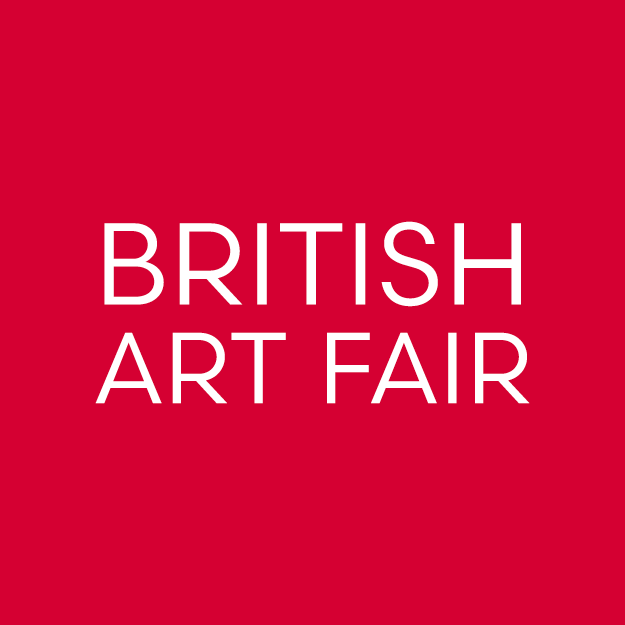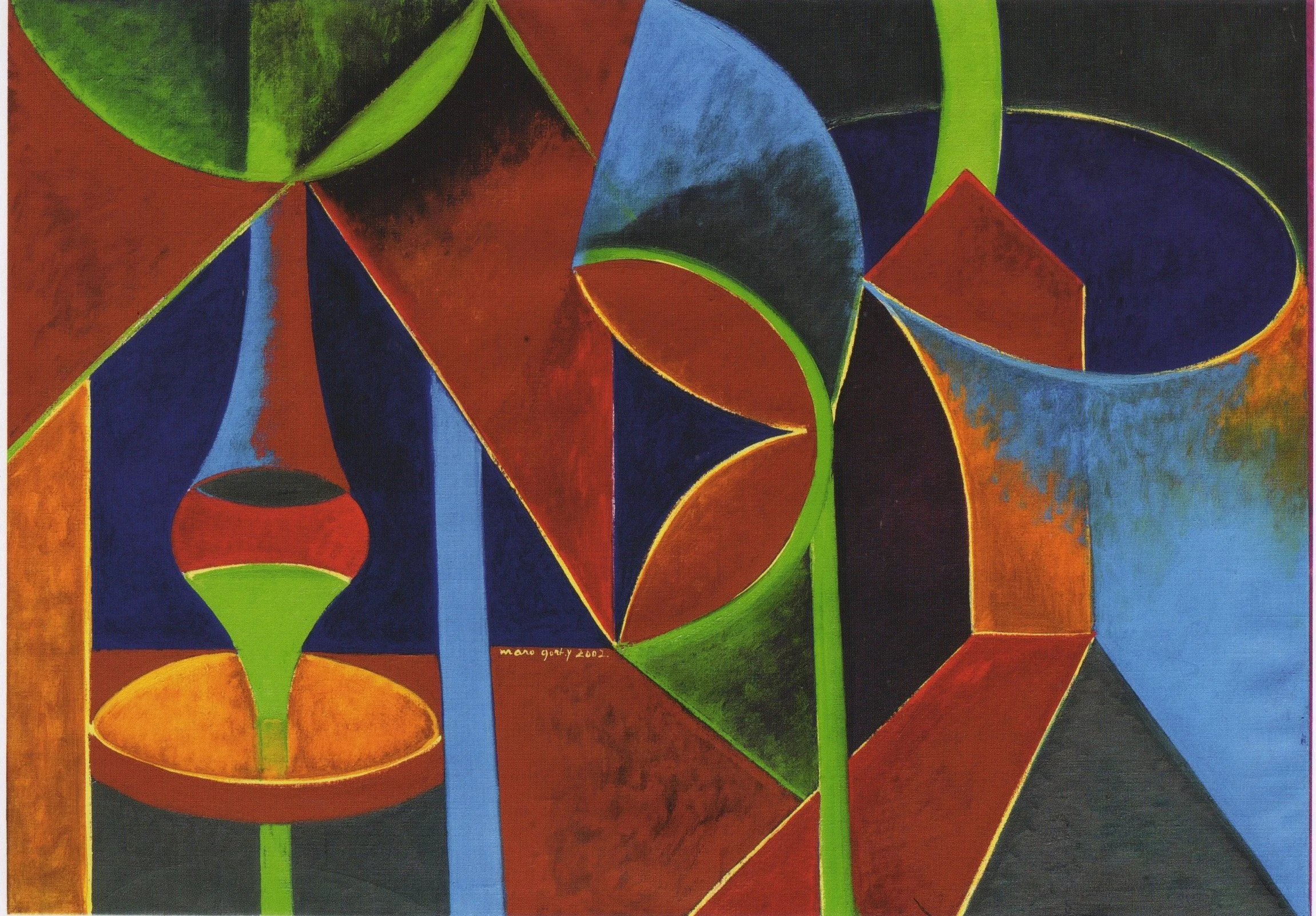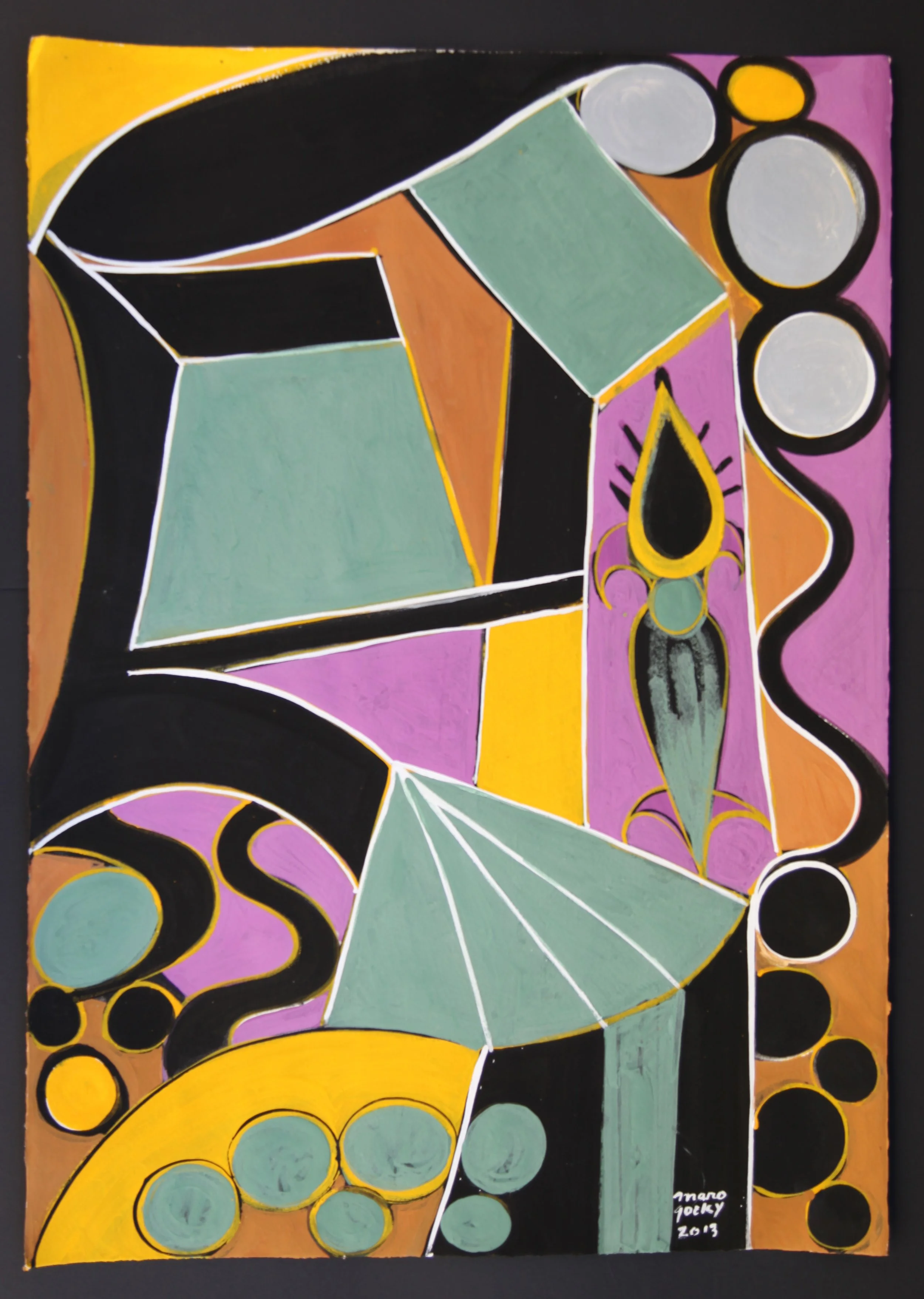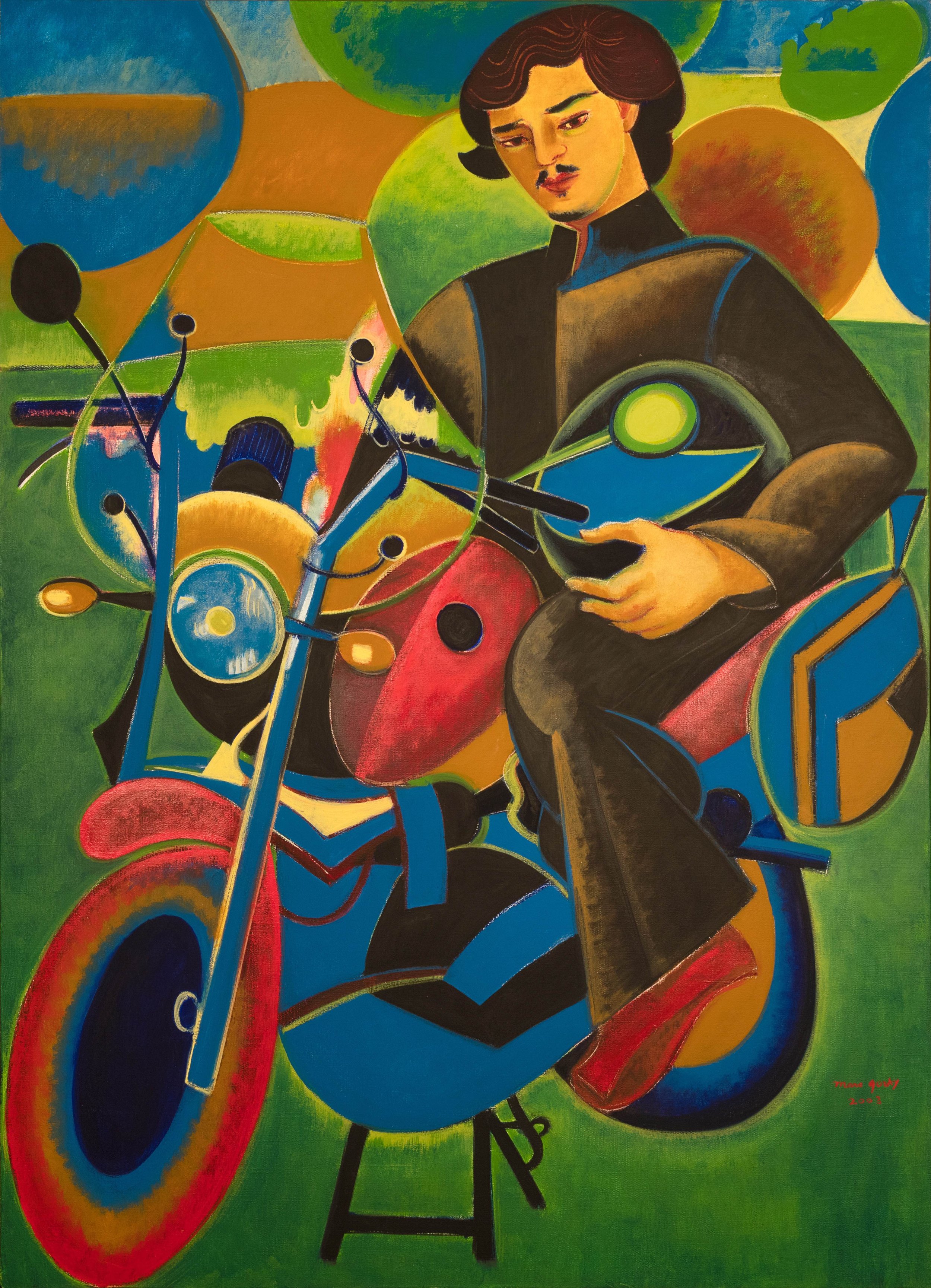Is there an art gene?
Maro Gorky at Saatchi Gallery and Long & Ryle
Maro Gorky, The New Wing, 2002, Oil on canvas, 100 x 140 cm, Courtesy Long and Ryle
“My abstract period was between the ages of two to five,” Maro Gorky tells me, sat on a bench on the ground floor of the Saatchi Gallery, in a room full of her paintings.
Gorky, 82, is in England for the opening of two concurrent exhibitions of her figurative works, both curated by her London gallery, Long & Ryle. The Saatchi show, a five-decade retrospective of her vibrant oils, is called The Thread of Colour, the second, Maps of Feelings, is a collection of works on paper at the L&R gallery in Pimlico.
Maro Gorky, Glade, 2013, powder and acrylic
70 x 50 cm, Courtesy Long and Ryle
I’ve long admired Gorky’s art, I think she’s a great painter. Whether she’s depicting the landscapes around her Tuscan home, where she’s lived with her sculptor husband Matthew Spender since 1968, or painting portraits of her family and friends, she’s developed a unique voice: bold, expressive colours; dynamic compositions; undulating, curlicue forms. There are echoes of Byzantine art, and Boticelli and Georgia O’Keeffe: ‘medieval modern’, maybe.
It’s hard to find a piece of writing about Maro Gorky without mention of her father, Arshile Gorky: if she’s a great painter, he is now almost universally acclaimed as a Great Painter, undoubtedly high in the canon, a vital link between European Modernism and American Abstract Impressionism. Coincidentally – or maybe not – Matthew is the son of acclaimed poet Stephen Spender, and pianist Natasha Spender.
Crucial to Maro’s development as an artist, she reckons, were the few years she shared with her father. “I was allowed to paint on the back of his canvases,” she recalls, fondly. “Sometimes I over-reached and painted my marks on the front of them, too. He used to get angry about that, and throw me out of the studio, onto the grass outside.” Suffering from incurable cancer, and reeling from a series of crises, Arshile Gorky committed suicide in 1948, when his daughter was five. “I’m still angry with him,” she tells me.
If you try to think up famous painters, who had famous painter children, the list is remarkably short. The Breughels, the Cranachs, the Gentilescis, of course. More recently the three-generation Wyeth dynasty. So here’s a question that comes to mind: is artistic ability hereditary? Is there an art gene? Dexterity and cognitive ability, pattern recognition even, might be heritable traits, but the road to artistic greatness is, surely, as much to do with nurture and temperament than genetic input. In Maro Gorky’s case much of that nurture came early. Arshile Gorky’s artistic friends – the likes of Willem de Kooning, Mark Rothko, Andre Breton and Roberto Matta, were frequent visitors to his New York and Connecticut studios. In a recent FT interview, she distinctly remembers being given art lessons by Matta and Breton: “just put colours on the canvas without an idea – what you want and like, and then see what you see.”
Has she felt overshadowed, or empowered by the fame of her father, I wonder. Has his reputation been a boon, or a burden to her career? A bit of both, it seems. When she applied to get into the Slade, in the early sixties, Arshile Gorky’s status in the artistic canon wasn’t as established as it is now. She figures her acceptance was to do with her hard work and strong portfolio rather than her surname, pointing out that Mary Moore was rejected by the art college in the same period, when Moore’s father Henry was perhaps the leading light of the British art world.
After Gorky’s death, in 1948, his only daughter was sent to a series of different schools, in a number of different countries. This peripatetic early existence, which has left her feeling rather unsure of her nationality (though she has a rather posh English accent) surely accounts for the rooted nature of her adult life. In 1968 she and Matthew bought a dilapidated farmhouse in the hills near Siena, which they renovated, filling it with sculptural creations fashioned by Matthew, and decorating the walls with her painted designs. “A lot more colourful,” she says, when I make the inevitable Charleston Farmhouse connection. “I don’t like pastels, my colours come straight out the tube, I rarely mix them.”
Maro Gorky, Valerio, 2003, Oil on canvas, 140 x 100 cm, Courtesy Long and Ryle
There they raised their two daughters, Saskia and Cosima, and hosted a lot of famous friends. Filmmaker Bernardo Bertolucci was a regular visitor: he based his 1996 movie Stealing Beauty on life at the farmhouse. The author Bruce Chatwin – nicknamed ‘Chatterbox’ – often regaled the family with tales from his travels at the dinner table. The comedian Barry Humphries was Spender’s brother-in-law.
The portraits and landscapes on the Saatchi walls around us all reflect Maro’s deep love of her home and her family. There are paintings of both daughters, posing while pregnant. Cosima’s husband Valerio Bonelli sits astride a motorbike, as solid and stylised and spiritful as a Tamara de Lempicka portrait (though Maro bristles slightly at the comparison). Groups of friends grin, as if posing for a holiday snap, perhaps cheered by one too many lunchtime Chiantis. And then there are the gorgeous Tuscan landscapes, a technicolour dreamworld of curvaceous hills, and fields, and cypress trees. The two largest canvases were completed so recently you can still smell the turps. The complexly composed Spring Vines and Autumn Vines depict the same subjects from opposite sides, in different colour schemes: each is intended as a gift for Maro’s daughters, reflecting their different temperaments.
Maro Gorky, Autumn Vines, 2025, Oil on canvas, 190 x 250 cm, Courtesy Long and Ryle
So, you’ll be wondering, have Saskia and Cosima Spender ended up becoming artists in their adult lives? Given their heritage, and given their idyllic upbringing… of course they have. Saskia is a London-based fine art ceramicist, taught by family friend Betty Woodman. Cosima is an award-winning filmmaker, director of the documentaries Without Gorky and Palio. Her latest work, premiered at the opening of the Saatchi show, and playing on a loop by the entrance, examines her mother’s working practice, so rich in multi-generational influences, so rooted in the Tuscan countryside.
The Thread of Colour runs at Saatchi Gallery until May 12, Maps of Feelings at Long & Ryle until May 13.




